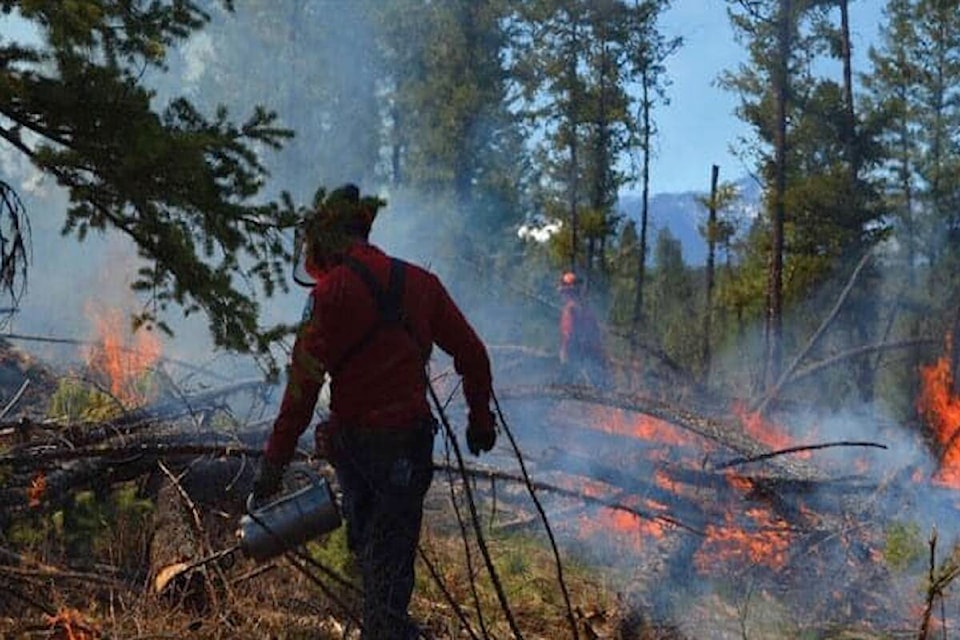Fire season officially kicked off on April 1.
The province has seen over 50 reported wildfires already and the season has hardly started.
Wildland Fire Ecologist Robert Gray has been studying the science behind wildfires for years. He says when we look to predict upcoming fire seasons, drought is the top concern.
“People think they can look at snow pack, but there just isn’t any good, strong correlation between snowpack and the eventual fire season… Most of the research is showing that drought has a big impact.”
Gray says the province saw a very dry late summer and fall last year.
“It’s a concern, because the large fuels - the logs and the duff and stuff, is very dry still right now and if the snowpack comes off very quickly it doesn’t have a chance to soak in. Those fuels are basically ready to burn early summer.”
On top of that, Gray says those fuels can be very difficult to extinguish if they catch on fire and typically eat up valuable provincial resources.
“Fires tend to eat up resources, and, of course, the more resources you eat up the next fire has fewer resources and it’s a cascading affect.”
February through April have been relatively dry in B.C. as well and could fuel a nasty wildfire season, but predicting exactly how the summer will go is not easy.
“We went from a very quiet 2020 to the heat dome in 2021 and a bad fire season. What we can predict is that every three or four or five years we’re going to have a significant fire season, just because of increasing global temperatures, changes in weather patterns, increased drought, things like that. We might have a down year, or down two years, but we’re rolling the dice and eventually we will have a bad fire season.”
Gray explained that 2023 could be setting up a challenging fire season for next year.
“The el ninos that we’ve had have really driven global temperature. El ninas tend to cool things a little bit. What I’ve seen for some of the modelling work, long range modelling, that by next year 2024 we have a building el nino which will probably drive record global temperatures.”
READ MORE: Low rainfall may elevate drought, wildfire risks in B.C. this summer
Drought and high temperatures aren’t the only cause for concern. Gray says a year with lots of precipitation allows more growth of fuels.
“We did some prescribed burning in the East Kootenays last year in the springtime and it was moist up until we had that really significant drought in the year. We grew so much grass we could have burnt the same site in the fall.”
So what do we do if wildfire season is inevitable? Gray says the more prepared we are ahead of time the better.
“We’ve done a lot of fuel treatment, we’ve educated people about not starting fires and protecting their homes and stuff, so that it really doesn’t matter what kind of fire season we have because we are ready for it.”
According to Gray, the provinces needs to do more work on fire preparation and mitigation.
“I would invest massively in prevention and mitigation,” Gray said in response to what he would do if taking over the fire service in B.C. “We spend an inordinate amount of money on response and recovery, and most of the international disaster agencies like the UN Disaster Program are basically telling governments ‘you need to reverse the formula, you need to spend far more on prevention mitigation,’ which basically is fuels work.”
Gray says the only way to reduce evacuations and impacts to the provincial budget as well as improve air quality is to invest heavily in mitigation work, something the province isn’t doing.
“It’s the same with any other natural disturbance. Whether it’s flooding or earthquakes, if you spend the money up front then when the disaster happens it doesn’t cost you as much. Yet for some strange reason and for 25 years we’ve been debating this. We’re not doing it with wildfires, and what’s worse is there’s some out there who are saying it’s too big a problem so therefore there’s no sense in spending the money on it.”
Predictions always suggest the places that dry out the fastest are at highest risk for a wildfire. “The Okanagan, the East Kootenays, the central plateau, Cariboo, Chilcotin - those are the places we tend to have a very long fire season that starts in April or May and if we don’t get June rain then you’re adding June to it. Those are places that it’s about a six month fire season.
As of April 20, B.C. has 26 wildfires currently burning.
READ MORE: Criminal probe begins after campfire-sparked blaze threatened homes in Kamloops
brittany.webster@blackpress.ca
Like us on and follow us on




